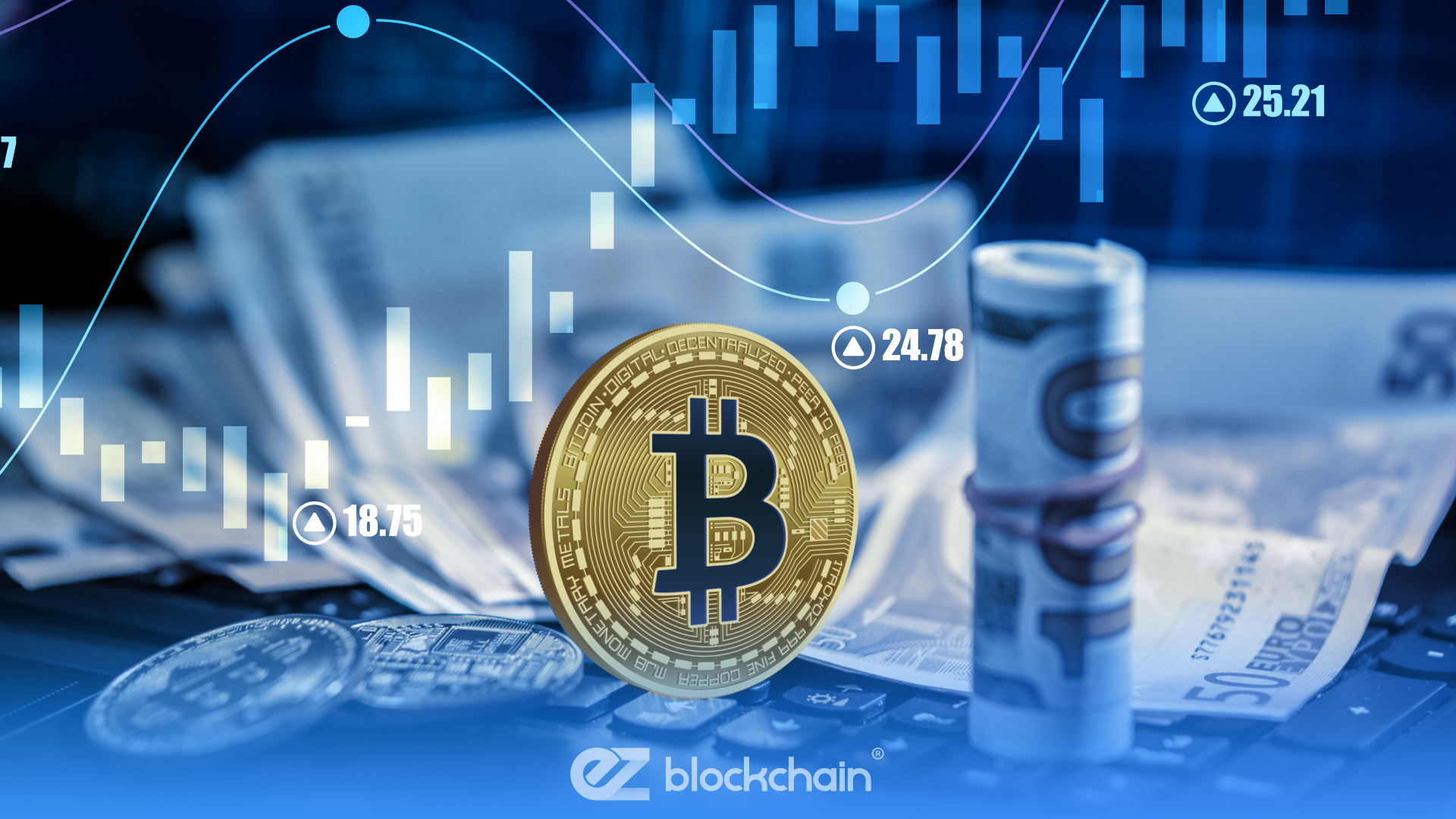Stay up to date with the latest news, announcements, and articles.
- 2025 Trade War Flashpoints That Shook the Markets
- Stock Markets Under Pressure
- Cryptocurrency Reaction
- Mining and Hardware
- Capital Flight and De-Dollarization: Is Crypto a Global Alternative?
- Institutional Moves: Hedging or Retreating?
- Central Bank Policy and Trade Wars
- What Could Happen Next? 2025–2026 Trade War Scenarios
- Trade Wars Redefine Risk — and Crypto’s Role in It
However, right after President Trump’s reciprocal tariffs came into effect, we’ve witnessed global trade wars waged full-force, which couldn’t but shake up related stock markets and industries, cryptocurrency no exception.
With Bitcoin gradually but surely taking the role of “new digital gold,” we see the ever-tighter connection between global finance flows, stocks, and currencies, both digital and fiat. Is it tight enough for trade-war risks and policies to bleed into crypto? We may find out if we put the whole trade wars and crypto situation under the microscope.

This article studies the milestones of the currently waging trade war, reaction of stocks and cryptos, effects and policies, future forecasts, and the ultimate impact of trade wars on cryptocurrency market in general.
2025 Trade War Flashpoints That Shook the Markets
Let’s start with a general outlook on the stages of the trade tensions happening mostly between the US and a bunch of EU and other countries with “unfair import pricing,” with China of course taking the hardest hit.
Here’s what we see if we structure the chronology:
- April 2: Trump hikes US tariffs on goods imports to 145% on selected Chinese items. Business Insider warned that Goldman Sachs expects these levies to eventually not do the trick, and Trump’s stimulus gains from tax cuts may only offset the economic growth, even after a brief tariff pause.
- April 11: China retaliates with 125% tariffs on imports coming from the US. Beijing calls the US move “a joke,” and proceeds to slap harsh levies on a huge range of goods, from semiconductors to agricultural equipment.
- April 17: Trump shows signs the tit-for-tat cycle may be winding down. He hinted at freezing further hikes and, eventually, watched as some of the stocks went sharply higher in hopes of an upcoming truce and stability.
- May 12: Temporary truce cuts US rates to 30% (from 145%) and China’s to 10% (from 125%) for 90 days. Markets rejoice, with the S&P 500 hitting its highest close since March 3, though most warn that a lasting détente can hardly be expected.
Currently, we have a very fluctuating situation, where some stocks and markets are enjoying the tariff pause (while they can) and others are already experiencing intimidation before the pause terminates mid-Summer (circa July 31, to be exact).
However, the most important takeaway out of all this is that there are stocks that perform well during trade wars, potentially leveraging new opportunities in place of old, overdue ones. This gives a lot of hope, especially for new and progressive markets, like cryptocurrency. But let’s now go through some factual stock figures to get the big picture.
Stock Markets Under Pressure
If we analyze the effect of the 2025 trade crash on the biggest stocks, we can see that most of the global indices plunged in early April:
| Index | April 3 Change | April 4 Change | April 7 Change | April 10 Change |
| S&P 500 | -4.84% | -5.97% | -0.23% | -3.46% |
| Nasdaq | -5.97% | -5.82% | +0.10% | -4.31% |
| STOXX 600 | -2.60% | -3.10% | -4.55% | +4.26% |
| Nikkei 225 | -2.77% | -2.75% | -7.83% | +8.36% |
(Data from the 2025 crash summary)
Most stocks, expectedly and understandably, dropped and struggled during the April riot of tariff fluctuations. Although, once things died down a little, certain stocks clawed back some losses: Dow futures plunged 1,500 points on April 6 but rebounded over the following week, right after the investors started acknowledging the truce coming April 17th.
Cryptocurrency Reaction
Amidst the trade wars, crypto chains reacted promptly and in similar vein to all the other global trading market players and communities. Lots of assets and tied stocks were immediately sold so as to avoid the risks of going broke and burdened by a deflated currency (or other asset).
For the crypto community, the April-May stretch happened as follows:
- Most crypto equity holders — miners and exchange platforms — sold their stocks off sharply on April 3, right as the US tariffs hit. Everybody seemed to have taken a risk-asset flight, similarly to many electronics and consumer goods producers and stock holders.
- Bitcoin dipped below $82,000 in price due to the fear of just-announced tariffs. But it then rose back 15% in April. In the long run, Bitcoin outperformed the S&P 500 and neared $100,000 in expectations of eventual de-escalation of the global financial strain.
- On May 8, bitcoin reclaimed the expected $100,000 as the trade truce lifted risk sentiment and $5.5 billion flowed into digital-asset funds in three weeks
Mining and Hardware
Surely, the tariffs on semiconductors and high-performance chips couldn’t but undermine mining hardware supply chains for miner rig owners and crypto mining farms. Both US chip bans and China’s initial 125% duties forced numerous miners worldwide to at least delay their ASIC orders in order to try and optimize ongoing expenses.
Others were fast to relocate existing rigs to locations where jurisdictions enforce lower tariffs, destinations in Canada, Southeast Asia, and Eastern Europe among them. Big hardware providers followed in to help balance things out by outsourcing their chip manufacturing — Qualcomm, AMD, and others escaped the harshness of China’s levies that way.
Still, however, Pure-play ASIC makers see cost hikes of up to 44%, and if, say, a solo crypto miner decides to purchase the Antminer S19 today, they will hardly achieve profitable margins when attempting to monetize it at first. You’ll have to take an extra mile for that.
Capital Flight and De-Dollarization: Is Crypto a Global Alternative?
Given all of the above, it safely comes down to the possibility that, yes, ladies and gentlemen, crypto may potentially have the best performing stocks during trade wars. This cannot be stated for a fact just yet, but we have more and more external reasons to think so.
These include:
- US dollar volatility tends to expectedly spike in the face of credit-rating downgrades and tariff twists. The dollar index is wobbling near one-month highs amid mixed central-bank signals.
- BRICS de-dollarization efforts are still in their nascent phase, with Brazil’s central banker seeing no single alternative to rival the dollar yet. Still, blockchain-based payment rails are being actively explored and prototyped
- Analysts point out that continued isolationist policies could accelerate de-dollarization, and many institutions are eyeing bitcoin as a “sovereign-neutral,” reserve asset (like gold). If bitcoin becomes widely adopted, its market cap can potentially rise up to $1.2 trillion.
Although Bitcoin cannot be regarded as a full-on alternative to the dollar, other areas where it can help de-risk volatile situations (a back-up asset for hedging) and earn on priceless innovation potential are prioritized globally.
Institutional Moves: Hedging or Retreating?
It’s important to note crypto’s emerging role as the saving grace in all of this — it is already viewed as a reserve asset to stock up on before volatile market times. It can be used at least as a partial sanctuary against new, extreme policy risks, which is reflected by $5.5 billion of inflows into digital-asset funds only in late April (mostly in hedge funds and family offices).
Coinbase’s May outlook highlights also that rising twin deficits and tariff risks make bitcoin all the more appealing for finance holders and investors because it can help them diversify their monetary portfolios.
Central Bank Policy and Trade Wars
Up to date, there are but a few central bank decisions and policies influenced by the trade wars that can touch digital currencies. Digital-dollar ban under Trump prohibits US federal agencies from “developing, issuing, or promoting a central bank digital currency (CBDC)”, aka a “digital dollar.”
This has already given China and Europe more room to advance their CBDCs. Also, questions are being raised about how positively the US shapes the future payments landscape at all.
Then, we also have the Fed vs. ECB/BoE situation: while the Fed holds rates steady amid trade fluctuations, other major banks (BoE, RBA) turn to cuts. As a result, we are looking at diverging monetary responses to tariff-induced fears.
What Could Happen Next? 2025–2026 Trade War Scenarios
As dynamic and unpredictable as the situation is at the moment, the trade wars horizon can take on multiple possible scenarios:
- Renewed escalation: Full-force tariffs return after the 90-day pause, which is why we will probably see more similar market slow-downs, supply chain disruption, and crypto volatility risks.
- Selective agreements: The US government strikes deals with key partners, including the EU and the UK, isolates China, and pushes Beijing to pursue its own bilateral pacts, balancing out things by a bit.
- Strategic truce: A broader US-China framework emerges, which would lower duties progressively and allow for supply-chain normalization for balance in both equities and digital assets of the world.
- Multipolar fragmentation: Persistent trade blocs dictate a new reality, where de-dollarization is accelerated and crypto cements further as a go-to cross-border hedge.
Trade Wars Redefine Risk — and Crypto’s Role in It
Recent trade conflicts have shown us that today’s markets, as progressive as they can be, are as much about policy as fundamentals. And yet there are stocks resilient to trade wars in 2025.
Equities plunged on tariff escalations yet rebounded on truce hopes. Crypto, initially hampered, has shown new potential eventually — drawing in fresh capital as investors seek alternatives to a fracturing global trade order.
Whether bitcoin cements itself as “digital gold” or remains tethered to broader risk cycles will depend on the durability of any trade détente and the pace of de-dollarization. In this high-stakes environment, digital assets may prove both a risk-on lever and a protectionist hedge.
Do you need help preparing for the crypto-affecting tariffs after the 90-day pause? Contact specialists at EZ Blockchain to consult all things blockchain and crypto, discuss a new crypto farm project, outsource services, and rent hardware.
Fill out a form and our bitcoin mining expert will contact you.
FREE CONSULTATIONchoose
a miner
profit and
understand data?
business remotely
with EZ Blockchain?
Fill out a form and our bitcoin mining expert will contact you.









